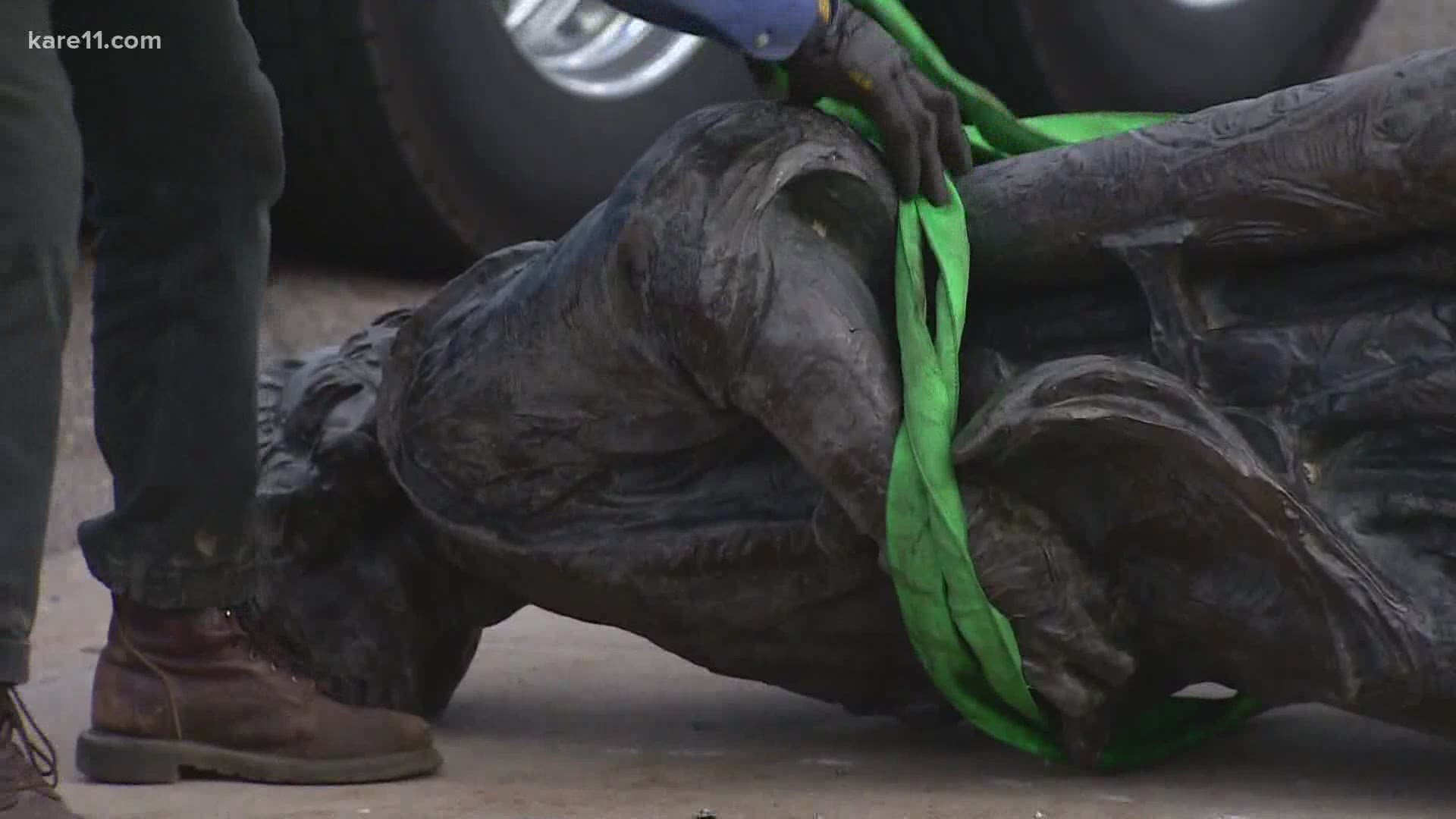MINNEAPOLIS — Every October, on Indigenous People's Day, we've had this conversation about a monument and the people surrounding it - at odds.
"For many of the American Indian people, that live in this state--this region-- you know these borders aren't ours-- Christopher Columbus symbolizes a history of loss, a history of genocide," Dr. Kate Beane said.
While the monument was standing on Minnesota State Capitol grounds, it was something Dr. Beane had to walk by daily to get to her job at the Minnesota Historical Society. She is currently the director of Native American Initiatives there.
"As a Dakota woman, in the state of Minnesota which is our ancestral homeland, I would like that statue to stay down," she said. "As someone who worked near the State Capitol, who wants to feel welcome bringing my children to work, I agree with Lt. Governor Peggy Flanagan in that it creates an unwelcome environment for us."
Shortly after the monument was brought down by peaceful protesters, the Lt. Governor Flanagan released this statement:
"I can't say I'm sad the statue of Christopher Columbus is gone. I'm not.
All Minnesotans should feel welcome at the Minnesota State Capitol, and our state is long overdue for a hard look at the symbols, statues, and icons that were created without the input of many of our communities.
The arrival of Christopher Columbus to what is now the Americas set in motion centuries of violence and genocide against the Indigenous people who already lived here. As the highest-ranking Native woman elected to executive office in the country, I have often reflected on the fact that I could see a statue honoring that legacy from my office window. It was a constant reminder that our systems were not built by or for Native people or people of color, but in many cases, to exclude, erase, and eliminate us.
Tonight, I'm thinking of all the Native children who might now feel more welcome on the grounds and in the halls of their state government."
Dr. Beane agreed to the Lt. Governor's statement and added that she hopes the space that the monument left behind, can be filled with discussion.


"Minnesota Historical Society would never ever, advocate for the destruction of any sort of statue or memorial," Beane said. "We're all about conservation and preservation. I think what we need to understand is that these memorials were created during time periods where Native people, African Americans were not considered as equals."
Beane added: "It doesn't fix anything, but it adds to the conversation, it creates dialogue, it highlights inequities in our society and it also creates a moment where people feel like their voices are being heard."
Beane said she's aware of that there are a lot of emotions tied to both the acts of bringing the monument down and watching it come down. However she said a monument is more than an icon, more like a snapshot of a time that terrified an continues to terrify so many.
"These individuals are representative of much more than just themselves," she said. "They're representative of the time periods in which they were living and the lasting effects of these symbols, of these monuments, of these individuals, and the impacts they made on entire societies and nations -nations of indigenous people have been impacted."
Dr. Beane said the fate of the monument is actually not in the hands of the Minnesota Historical Society but it is in the hands of the Capitol Area Architectural and Planning board. She said only after the decision is made by the CAAP board to either put the monument back up, or leave it down...then the historical society will take over in leading any discussions about the statue and the maintenance of it moving forward.

